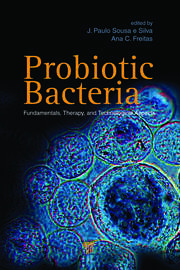ABSTRACT
Oral use is the most convenient way for administering probiotic products not only due to the easiness of the method but also to promote one of the main effects attributed to probiotics-improving intestinal microbial balance. Nevertheless, the upper gastrointestinal tract (GIT) is an adverse medium to probiotics; hence, there are
many advantages in understanding the physiology of GIT in order to develop products containing probiotics. Many textbooks delve deeply into GIT anatomy and physiology, and for detailed descriptions, one may consult Guyton and Hall Textbook of Medical Physiology (2011). Anatomically and physiologically, the digestive system is divided into the tubular GIT and accessory digestive organs (Fig. 2.1). The GIT is approximately 6 m in length and extends from the mouth to the anus. The organs of GIT comprise oral cavity, pharynx, esophagus, stomach, small intestine, and large intestine. The accessory digestive organs are the teeth, tongue, and salivary glands, liver, gallbladder, and pancreas.


